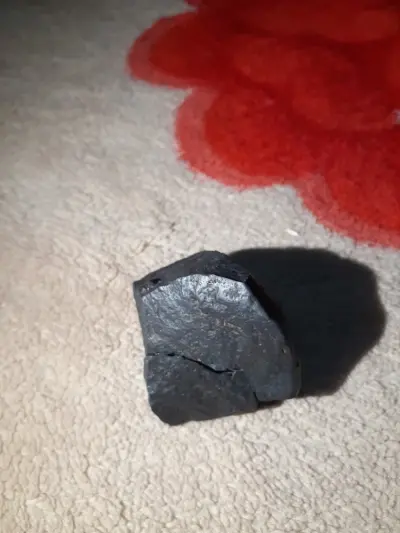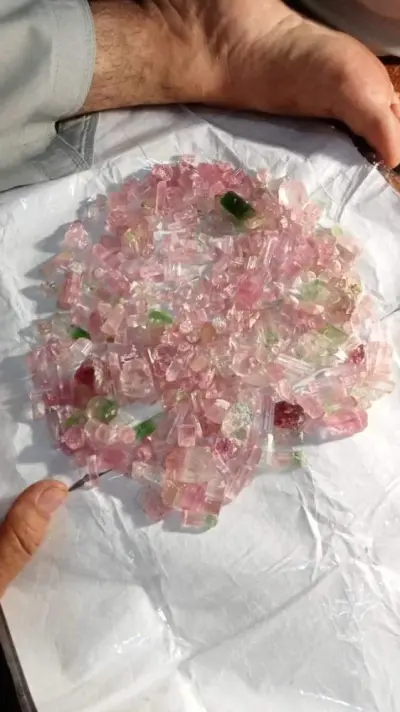Bitumen trade in Afghanistan - Exporting Bitumen to Afghanistan
- Anbar Asia
- Trade with Afghanistan
- Afghanistan's Petroleum market
- Bitumen trade in Afghanistan
- Afghanistan
 ProfileRuby, Lapis Lazuli, Emerald
ProfileRuby, Lapis Lazuli, Emerald - Afghanistan
 ProfileChromite
ProfileChromite - Afghanistan
 ProfileDairy
ProfileDairy - Afghanistan
 ProfileDiamond
ProfileDiamond - Afghanistan
 ProfileJam And Honey
ProfileJam And Honey - Afghanistan
 ProfileDiamond, Amber, Meteorite, Fossil
ProfileDiamond, Amber, Meteorite, Fossil - Afghanistan
 ProfileMeteorite
ProfileMeteorite - Afghanistan
 ProfileApartment, Industrial Buildings, Garden, Office, Farm, Shops And Stores, Villa, Village House
ProfileApartment, Industrial Buildings, Garden, Office, Farm, Shops And Stores, Villa, Village House - Afghanistan
 ProfileEmerald
ProfileEmerald - Afghanistan
 ProfileTurquoise, Ruby, Agate, Diamond, Lapis Lazuli, Amber, Topaz, Emerald, Jade, Charoite, Spinel, Chrysocolla, Pearl, Meteorite, Tanzanite, Fossil
ProfileTurquoise, Ruby, Agate, Diamond, Lapis Lazuli, Amber, Topaz, Emerald, Jade, Charoite, Spinel, Chrysocolla, Pearl, Meteorite, Tanzanite, Fossil - Afghanistan
 ProfileMeteorite
ProfileMeteorite - Afghanistan
 ProfileRuby, Agate, Lapis Lazuli, Emerald
ProfileRuby, Agate, Lapis Lazuli, Emerald - Afghanistan
 ProfileGold
ProfileGold - Afghanistan
 ProfileAgate
ProfileAgate - Afghanistan
 ProfileDiamond
ProfileDiamond - Afghanistan
 ProfileMedicinal Plants
ProfileMedicinal Plants - Afghanistan
 ProfileRuby, Agate, Diamond, Amber, Topaz, Emerald, Jade, Spinel, Meteorite
ProfileRuby, Agate, Diamond, Amber, Topaz, Emerald, Jade, Spinel, Meteorite - Afghanistan
 ProfileHandicrafts
ProfileHandicrafts - Afghanistan
 ProfileMeteorite
ProfileMeteorite - Afghanistan
 ProfileMeteorite
ProfileMeteorite - Afghanistan
 ProfileAluminum
ProfileAluminum - Afghanistan

 ProfileMeteorite
ProfileMeteorite - Afghanistan
 ProfileEmerald
ProfileEmerald - Afghanistan
 ProfileMeteorite
ProfileMeteorite - Afghanistan
 ProfileGalena, Chalcopyrite, Hematite, Turquoise, Ruby, Agate, Lapis Lazuli, Topaz, Emerald, Charoite, Spinel, Pearl
ProfileGalena, Chalcopyrite, Hematite, Turquoise, Ruby, Agate, Lapis Lazuli, Topaz, Emerald, Charoite, Spinel, Pearl - Afghanistan
 ProfileAmmonia, Chlorine, Nitrogen, Oxygen, Phosphoric Acid, Sulfuric Acid
ProfileAmmonia, Chlorine, Nitrogen, Oxygen, Phosphoric Acid, Sulfuric Acid - Afghanistan
 ProfileHematite
ProfileHematite - Afghanistan
 ProfileMeteorite
ProfileMeteorite - Afghanistan
 ProfileRuby, Diamond, Lapis Lazuli, Topaz, Emerald, Jade, Spinel
ProfileRuby, Diamond, Lapis Lazuli, Topaz, Emerald, Jade, Spinel - Afghanistan
 ProfileTurquoise, Ruby, Agate, Meteorite
ProfileTurquoise, Ruby, Agate, Meteorite



 محمد ناصر1 months ago
محمد ناصر1 months ago ProfileRuby, Lapis Lazuli, Emerald
ProfileRuby, Lapis Lazuli, Emerald عبدالواحد1 months ago
عبدالواحد1 months ago ProfileChromite
ProfileChromite الکوزی1 months ago
الکوزی1 months ago ProfileDairy
ProfileDairy Alhamarab2 months ago
Alhamarab2 months ago ProfileDiamond
ProfileDiamond سدید3 months ago
سدید3 months ago ProfileJam And Honey
ProfileJam And Honey نصیر احمد ندامی3 months ago
نصیر احمد ندامی3 months ago ProfileDiamond, Amber, Meteorite, Fossil
ProfileDiamond, Amber, Meteorite, Fossil Amiri3 months ago
Amiri3 months ago ProfileMeteorite
ProfileMeteorite lebasuden mohmandyar3 months ago
lebasuden mohmandyar3 months ago ProfileApartment, Industrial Buildings, Garden, Office, Farm, Shops And Stores, Villa, Village House
ProfileApartment, Industrial Buildings, Garden, Office, Farm, Shops And Stores, Villa, Village House Fayaz lamer3 months ago
Fayaz lamer3 months ago ProfileEmerald
ProfileEmerald سنگهای قیمتی3 months ago
سنگهای قیمتی3 months ago ProfileTurquoise, Ruby, Agate, Diamond, Lapis Lazuli, Amber, Topaz, Emerald, Jade, Charoite, Spinel, Chrysocolla, Pearl, Meteorite, Tanzanite, Fossil
ProfileTurquoise, Ruby, Agate, Diamond, Lapis Lazuli, Amber, Topaz, Emerald, Jade, Charoite, Spinel, Chrysocolla, Pearl, Meteorite, Tanzanite, Fossil وحید الله خواجه زاده4 months ago
وحید الله خواجه زاده4 months ago ProfileMeteorite
ProfileMeteorite حامد ولیزاده4 months ago
حامد ولیزاده4 months ago ProfileRuby, Agate, Lapis Lazuli, Emerald
ProfileRuby, Agate, Lapis Lazuli, Emerald M ayaz khogyany4 months ago
M ayaz khogyany4 months ago ProfileGold
ProfileGold Sohrab Nazari4 months ago
Sohrab Nazari4 months ago ProfileAgate
ProfileAgate عتیق الله5 months ago
عتیق الله5 months ago ProfileDiamond
ProfileDiamond شادمحمد ولیزاده5 months ago
شادمحمد ولیزاده5 months ago ProfileMedicinal Plants
ProfileMedicinal Plants Anwar Stanikzai5 months ago
Anwar Stanikzai5 months ago ProfileRuby, Agate, Diamond, Amber, Topaz, Emerald, Jade, Spinel, Meteorite
ProfileRuby, Agate, Diamond, Amber, Topaz, Emerald, Jade, Spinel, Meteorite Benaziryosufi5 months ago
Benaziryosufi5 months ago ProfileHandicrafts
ProfileHandicrafts افغان سنگ5 months ago
افغان سنگ5 months ago ProfileMeteorite
ProfileMeteorite احمد5 months ago
احمد5 months ago ProfileMeteorite
ProfileMeteorite شرکت تولیدی شمش آلومینیوم5 months ago
شرکت تولیدی شمش آلومینیوم5 months ago ProfileAluminum
ProfileAluminum Abdul Rashid ajel6 months ago
Abdul Rashid ajel6 months ago
 ProfileMeteorite
ProfileMeteorite مه تجارت سنکه میکونم6 months ago
مه تجارت سنکه میکونم6 months ago ProfileEmerald
ProfileEmerald شهاب سنگ7 months ago
شهاب سنگ7 months ago ProfileMeteorite
ProfileMeteorite Omri Sahib8 months ago
Omri Sahib8 months ago ProfileGalena, Chalcopyrite, Hematite, Turquoise, Ruby, Agate, Lapis Lazuli, Topaz, Emerald, Charoite, Spinel, Pearl
ProfileGalena, Chalcopyrite, Hematite, Turquoise, Ruby, Agate, Lapis Lazuli, Topaz, Emerald, Charoite, Spinel, Pearl همایون9 months ago
همایون9 months ago ProfileAmmonia, Chlorine, Nitrogen, Oxygen, Phosphoric Acid, Sulfuric Acid
ProfileAmmonia, Chlorine, Nitrogen, Oxygen, Phosphoric Acid, Sulfuric Acid رجب علی جوادی10 months ago
رجب علی جوادی10 months ago ProfileHematite
ProfileHematite محمود11 months ago
محمود11 months ago ProfileMeteorite
ProfileMeteorite نیک محمد نظری11 months ago
نیک محمد نظری11 months ago ProfileRuby, Diamond, Lapis Lazuli, Topaz, Emerald, Jade, Spinel
ProfileRuby, Diamond, Lapis Lazuli, Topaz, Emerald, Jade, Spinel Najib11 months ago
Najib11 months ago ProfileTurquoise, Ruby, Agate, Meteorite
ProfileTurquoise, Ruby, Agate, Meteorite
















